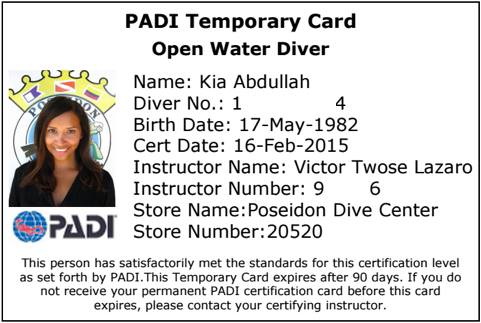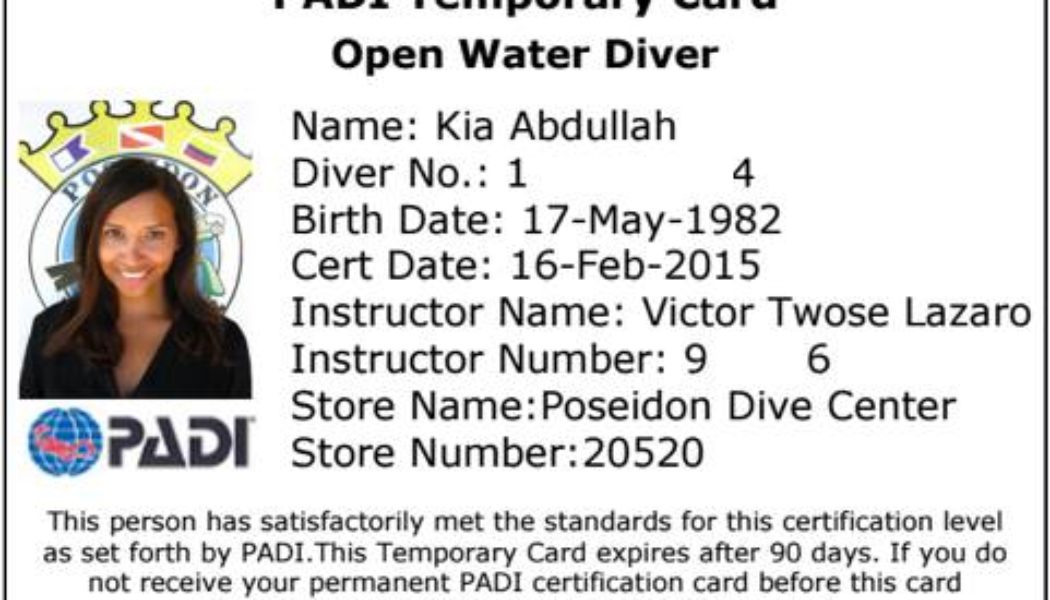A step-by-step guide on how to pass the PADI Open Water Diver course
In theory, an expert diver should be writing this post. Logically, he or she could tell you what to expect, give you insider tips and prepare you for the challenge ahead. That said, I have one distinct advantage over the experts: I know exactly how hard it is for nervous first-timers.
I know what it’s like to almost back out of your first dive and to quit the course altogether. I also know the guts it takes to get back on and finish the course. Back in 2015, five months after my first attempt, I passed the PADI Open Water Diver course.

Since then, I’ve completed over 40 dives all around the world, taking on shipwrecks, plane wrecks, reefs, walls and bommies. I hate to think how I would have missed out on all these stunning experiences if I had quit the course for good.
To help other nervous first-timers, I’ve put together a step-by-step guide on how to pass the PADI Open Water Diver course. I cover the theory first and then the hard stuff: the confined water tests and the open water tests, touching on a few difficult points along the way.
How to pass the PADI Open Water Diver course
Choosing a course
All PADI courses comprise the following:
- Knowledge development: theory work to help you understand the basic principles of scuba diving. This is reviewed in a final test in which you must score 75% or higher. If you fail, you can retake the test. See ‘PADI test questions’ below for more.
- Confined water dives: this is usually done in a pool or shallow water in the sea with the aim of teaching you basic scuba skills. See ‘PADI confined water tests’ below for more.
- Open water dives: you must complete four open water dives in which you demonstrate your skills. See ‘PADI open water tests’ below for more.
In choosing a course, firstly, make sure your dive centre is certified by PADI. There are centres all over the world that advertise the PADI Open Water Diver course but which aren’t actually certified. They will happily take your money and while you probably will learn to dive, you won’t be certified.
Secondly, if you’re a nervous diver, try to book a 4-day or even 5-day course. The intensive 3-day courses run through the practical tests very quickly with little time to coach weak swimmers. A longer course means more time for hand-holding (which I needed – literally).
PADI test questions
You will find the practical side of diving much easier if you read through the theory first. Your dive centre will supply you with a book comprising five different chapters. If you can confidently answer the tests within the chapters and the knowledge reviews at the end of each, you will likely pass the exam without difficulty.
Depending on your learning style, it is possible to blitz through chapters 1-3 on one night and 4-5 on the second. Naturally, if you have more time to play with, then feel free to split up the studying even further. You can also choose the eLearning option. This may be provided by your dive centre as standard, or you can choose to self-learn before beginning the practical course.
To prepare for the PADI test questions:
- Go over the knowledge reviews
- Practise with flashcards
- Revise the dive signals
- Practise all the above with the Open Water Diver Course Ebook (PDF, $2.99)
Tips:
- For the ‘BWRAF’ check, substitute the clunky PADI acronym (‘Begin With Review And Friend’) for ‘Bruce Willis Ruins All Films’. (It’s not true of course but it’s far easier to remember.)
- For the five-point descent, use the SORTED acronym: Signal, Orientate, Regulator, Time, Equalise and Descend.
- There is no standard acronym for the different types of ascents (Normal ascent, Alternative air source ascent, Controlled emergency swimming ascent, Buddy breathing ascent, Buoyant emergency ascent), but they will come up so use mine: NACBB for ‘Not All Children Break Bad’ – it’s far from perfect but it works for me!
- Don’t be daunted by the dive tables. They seem complicated at first but are straightforward once you have been through the booklet. Check with your instructor if you will be using the manual tables or an electronic one. If the latter, you will only need a loose understanding of the former.
PADI confined water tests
The following is a list of the confined water tests (or ‘pool tests’) you will be expected to complete. According to my instructor, most nervous divers have difficulty clearing the mask (I certainly did). If you have a snorkel and mask, practise this skill yourself before the course.
- 200m swim
- Tread water for 10 minutes
- Assemble, put on and adjust scuba gear
- Pre-dive safety check (BWRAF)
- Inflate and deflate BCD
- Clear snorkel on ascent by exhaling sharply and continue breathing without lifting face from water
- Swap from regulator to snorkel, snorkel to regulator several times without lifting face from water
- Descend underwater (SORTED)
- Clear water from your regulator (exhaling sharply and using purge button)
- Use your SPG and signal your remaining air
- Recover your regulator from behind your shoulder
- Recognise and respond to hand signals underwater
- Clear a partially flooded mask
- Clear a fully flooded mask
- Remove mask and breathe for one minute while stationary, replace and clear mask
- Remove mask and swim for at least 15 metres, replace and clear mask
- Breathe from a free-flowing regulator for 30 seconds (air blasts out of the regulator forcing you to ‘sip’ air from it)
- Demonstrate neutral buoyancy: float at eye level at the surface with no or minimal air in the BCD and while holding a normal breath; pivot from horizontal to vertical underwater several times; float in the ‘Buddha’ stance for 30 seconds
- Take off your scuba gear and put it back on at surface and at depth
- Tighten a loose cylinder band
- Disconnect and reconnect the low-pressure inflator at surface and at depth
- Swim and navigate with a compass at surface and at depth
- Remove and replace weights at surface and at depth
- Emergency weight drop at surface and at depth
- Cramp release on buddy and on yourself at surface and at depth
- BCD oral inflation at surface and at depth
- Out of air exercises: use alternate air source, provide alternate air source, practise buddy breathing for one minute while swimming
- Practise a controlled emergency swimming ascent (CESA)
- Ascend while equalising
- Tired diver tow for 25 metres
- Use inflatable signalling device
- Remove weights, scuba unit and fins in water too deep in which to stand and exit
- Post-dive care of scuba gear
Phew.
PADI open water tests
You must complete four open water dives in order to pass the course. Dive 1 will orientate you, get you comfortable with the scuba gear and test a few of the above skills. Dives 2 and 3 will rigorously test the above skills while Dive 4 is usually a more relaxed affair allowing you to use and enjoy your newly developed skills.
Final word
The most important thing to remember is to keep breathing and never hold your breath. If you feel panic rising, just continue breathing. If you can’t think through your flooded mask, just keep breathing. If you want to shoot up to the top, just keep breathing.
The second most important thing is to practise, practise, practise beforehand. The more time you spend in the water, the more confident you will become.
If I can do it after vomiting into the regulator five metres down and then again on the boat for good measure with a whopping 8kg around my waist, then so can you.
Good luck!










